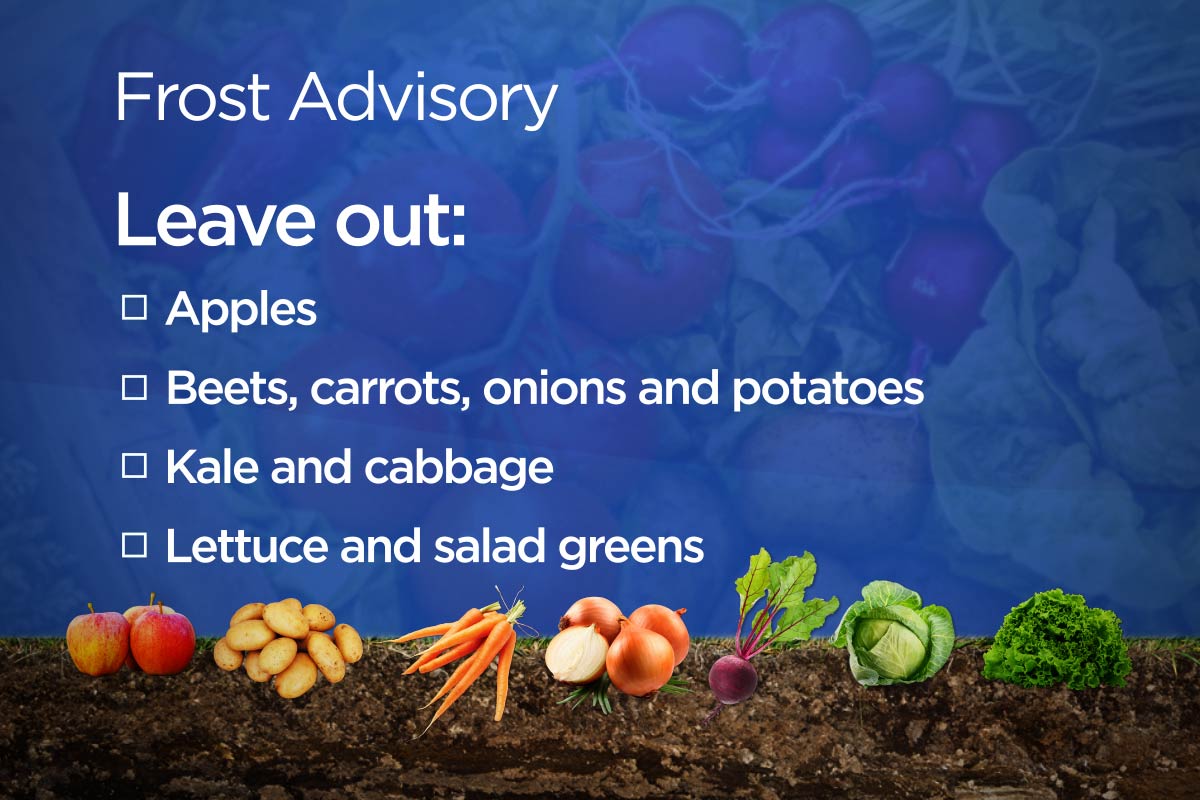As summer comes to an end and fall weather sets in, Albertans are waking up to frosty mornings as temperatures hover around, or even below, the freezing mark overnight.

For many green thumbs, that means covering their tomatoes at night. But sometimes, not even a blanket can protect your hard-earned bounty.
READ MORE: Extra fruits and vegetables? Find them a good home with these Edmonton non-profits
Environment Canada has issued frost advisories for communities expected to experience early season frost that could damage crops and gardens.
But there are a few garden vegetables that can weather the cold. Here’s a basic list of what you should harvest when the temperatures dip to zero, and what can hold on for a couple more weeks.
What to pick and bring inside
Beans and peas: Ripe or not, beans and peas do not do well with frost. If you expect a frost cover overnight — harvest these and enjoy.
Corn: Mature corn will not do well with a frost, and should be harvested immediately. Immature cobs can be left on the stalk with hopes for another week of growth — but a good freeze will shorten their shelf life by three or four days.
Tomatoes and peppers: Ripe tomatoes or peppers should be harvested immediately. If you have unripened ones on the vine, and the forecast calls for temperatures right around 0 C, you can take a gamble. Try placing your plants along the south side of your home and covering them with a blanket. If the forecast calls for -2 C or colder, you are better off harvesting the un-ripened goods and letting them ripen inside.
Gourds: Mature gourds with a thick skin should be harvested immediately. Eat your cucumbers right away. Cure your pumpkins, squashes and zucchinis in a cold, dark room on a non-metal or non-concrete surface — this will make them last longer. Immature pumpkins or squashes will not ripen off the vine — so you’ll want to leave them out until their skins are quite hard. Hope for the best by covering them with a blanket on those cold nights, and be careful to not crush the vine.
READ MORE: ‘Garbage gardening’: How to turn kitchen scraps into plants
What to leave in the garden
Apples: Many types of apples can stay on the tree until the end of September (assuming we don’t see a significant late-September snowstorm). A light frost can actually make the fruit sweeter and more flavourful.
Root vegetables: Vegetables like beets, carrots, onions and potatoes can stay underground until the soil around them starts to freeze. A light frost would be no problem, but any kind of frost that would freeze the ground around them would damage the goods.
Lettuce and salad greens: A light frost will change the texture of these items, and they should be harvested to avoid freezing. But if we see a few more nice weeks, the base of the plant could still grow. If you’re optimistic – try cutting away the usable greens and holding out to see if you can get another growth before the end of the season.
Kale, cabbage and chard: These hearty vegetables do well under a light frost. Their colours can become more vibrant and their taste more robust. But no garden plant will survive a deep freeze. If you think temperatures will drop significantly below 0 C overnight, your best bet would be to harvest them and bring them inside.
READ MORE: How to grow your own plants, food inside this winter
- What is a halal mortgage? How interest-free home financing works in Canada
- Capital gains changes are ‘really fair,’ Freeland says, as doctors cry foul
- Ontario doctors offer solutions to help address shortage of family physicians
- Starbucks looks likely to win U.S. Supreme Court case involving pro-union workers







Comments